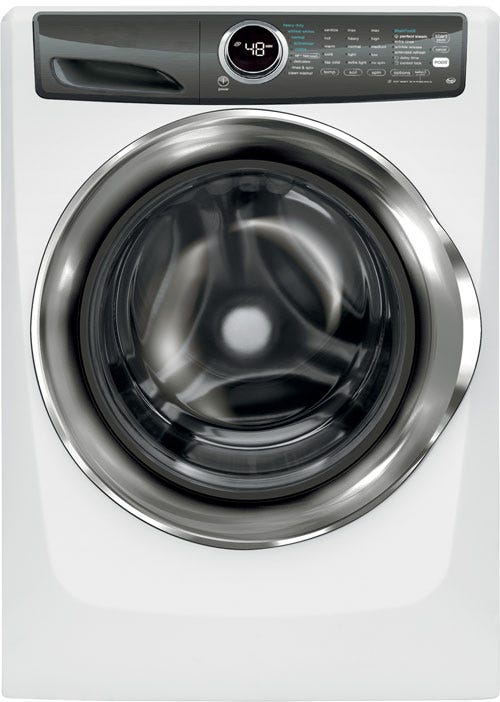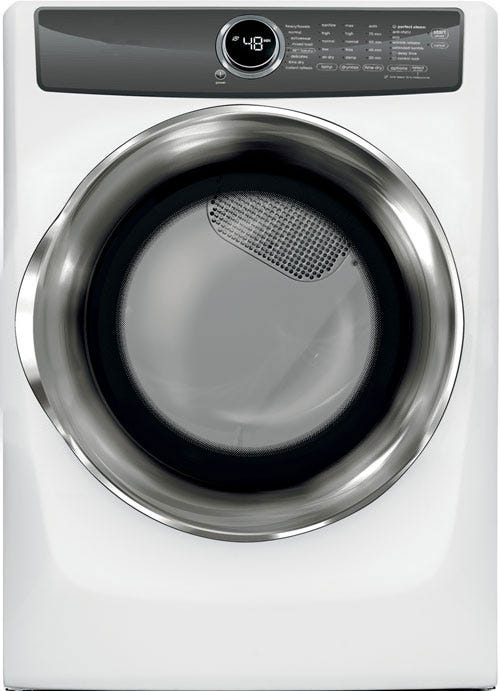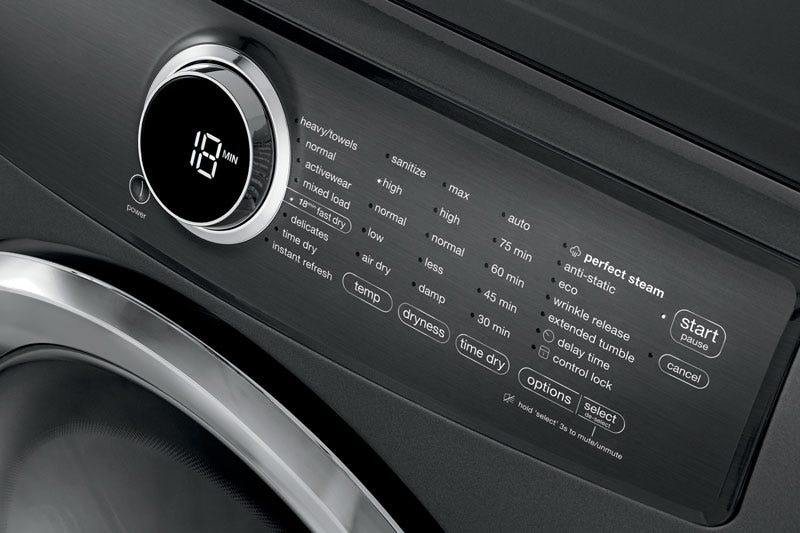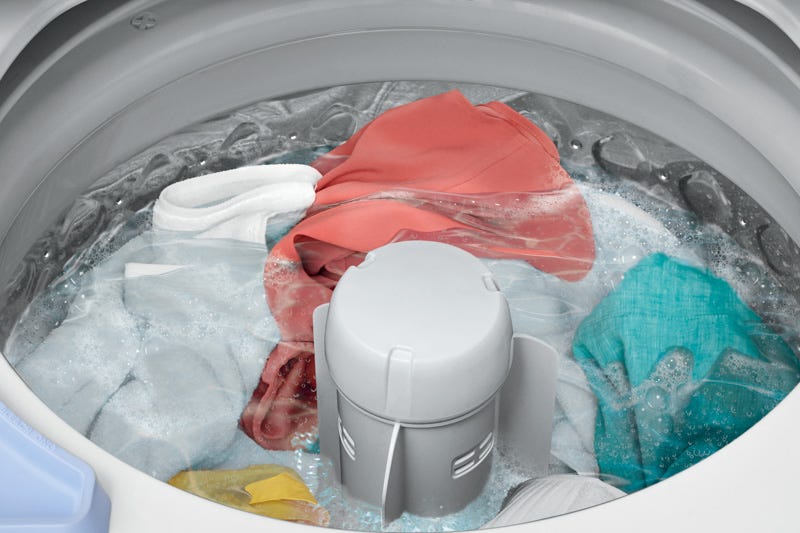Guide to Buying a Washing Machine and Dryer
Washers and dryers are often the workhorse appliances in our homes. They're available in a variety of shapes and styles, from compact stackable sets that will fit in the smallest apartment, to ultra-capacity machines for large families.

Types of Washers
Top Load Washers
These washing machines use an agitator to move clothes around, while the wash basket spins to help remove dirt and extract excess water.
High Efficiency Top Load Washers
These appliances use less energy than traditional Top Load Washers, which can help to reduce your utility bills. An impeller creates currents to move clothes through the water, cleaning your clothes with minimal force and helping to preserve them for longer.
Front Load Washers
Using around two-thirds less water than a Top Load Washer, Front Load Washers are energy efficient and able to wash larger loads.
2-in-1 Washer Dryers
These combination appliances handle the washing and the drying in one compact unit, ideal for smaller spaces.

Types of Dryers
Vented Tumble Dryers
These traditional dryers use hot air to absorb moisture from your clothes as they're moved around in a rotating drum. The hot, moist air is then vented outside.
Condensation Dryers
These appliances use a condenser to gather moisture from the air inside the dryer. The moisture forms into water, which is pumped out through a hose or into an internal reservoir. As no vent is required, these units can be easier to install than Vented Tumble Dryers.
Heat Pump Dryers
These dryers send hot air through an evaporator, turning moisture into water, which is pumped into a small storage tank. Similar to Condensation Dryers, no vent installation is required; however they can take longer to dry clothes than a traditional tumble dryer.
Features and Technology
Modern washers and dryers are designed to use less energy and less water, and require less maintenance than older models. Here are some features to look for when choosing a new appliance.
Sensor Dry System
Also called Moisture Sensor, this energy efficient feature gauges how much moisture is left in your laundry and adjusts the drying time as necessary.
Steam Options
Many dryers offer a steam feature to help refresh your clothes and remove wrinkles in a hurry.
Smart Appliances
Control your washer or dryer from anywhere using your smartphone, and receive alerts when it's time to clean them.
Sanitizing Cycles
Using high heat or steam, some models are able to sanitize hard-to-clean items. For households with allergy-sufferers, this feature can be useful for removing pollen and pet dander from clothing and bedding.
Measuring Checklist for Washers and Dryers
Before choosing a new washing machine and dryer, it's a good idea to check how much space you have.
Measure Your Home
All doors and hallways must be at least 28-30" wide at their narrowest point. Be sure to account for knobs, latches, closers, screen doors, shelves or other wall-mounted items.
Carefully measure the width, height and depth of the opening where the washer and dryer will be installed. Be sure to include door, floor and wall mouldings in your measurements. For height, measure to the bottom of the overhead cabinets, if you have them. For depth, allow 4-6” behind the machines for venting and connections.
Measure Your Washer and Dryer
Refer to the manufacturer specifications to ensure your washer and dryer will fit your space. If the laundry room isn’t deep enough for the appliances plus the dryer duct, you may be able to use special venting components, such as a side vent kit, to reduce venting requirements. Also, confirm where venting is required: right, left or rear. Side venting is available on select models. Ask your Product Expert for details.
Confirm the Following
- 110V grounded 3-prong electrical outlet
- Water supply (hot and cold)
- Drain hose is in close proximity to the washer
- A clean, solid and level floor surface. Due to high spin speeds on front-load washers, a solid, secure floor is recommended to reduce vibration and noise.
The Importance of Water Quality
If you live in an area with hard water, you may notice that your washing machine doesn't work as well as it should. Find out how to keep your laundry looking bright and preserve the life of your washing machine.
What is Hard Water?
Hard water occurs naturally. As water travels to your home it comes into contact with natural minerals, most commonly calcium and magnesium, which are dissolved and held in the water. Once water has accumulated enough dissolved mineral it becomes "hard". The more minerals dissolved, the harder the water.
What Hard Water Does to Your Laundry
Hard water prevents water from mixing with detergent to form an effective cleaning agent. The minerals bond with the soap to create a detergent curd that sticks to the fabric fibers, drawing in more dirt than before you washed your clothes. Over time, detergent residue can turn your white clothes gray or yellow, and you may even discover white or gray streaks on your colored clothes. The fabric can feel stiff and crusty, is less likely to flex and can wear out prematurely. Many homeowners try to combat these effects by washing their laundry more frequently, using more detergent and selecting hotter cycles, resulting in unnecessary additional expenses over time.
What Hard Water Does to Your Washing Machine:
When hard water evaporates, dissolved calcium and magnesium are left behind leaving a white, chalky residue called scale. Over time, scale builds up in your water pipes and water-using appliances, restricting water flow, reducing water pressure and causing the eventual failure of expensive parts like pumps and heating elements.
How a Water Softener can Help
A water softener works by removing the calcium and magnesium dissolved in water. This can help to reduce mineral deposits in your appliance, resulting in cleaner clothes and a longer lasting machine. For more information, speak with one of our Online Product Experts.
Good to Know
Capacity Ratings
Laundry capacity refers to how much you can wash at a time. In North America, washer and dryer capacities are rated in either I.E.C. (European standard) or D.O.E. (U.S. Department of Energy). These ratings differ slightly. For example, a washer with a 5.0 cu. ft. I.E.C. capacity would be approximately 4.3 cu. ft. D.O.E. Many European washers will also use kilograms to rate their capacity. Be sure to check you’re comparing laundry capacity using the same rating system, or ask one of our Product Experts to help you.
Stacked or Side-by-Side?
Front Load laundry pairs can be installed stacked or side-by-side, and are ideal if you’re short on space. If you choose to stack your laundry appliances, you'll need a stacking kit, which is sold separately, and extra installation fees may apply. Top Load laundry pairs can only be installed side-by-side.
Hoses and Accessories
Washers require hoses for water intake and drainage, and some dryers need hoses for venting. Most laundry appliances aren't supplied with hoses, so you’ll need to buy these separately. It's better not to reuse old hoses with a new appliance, as the rubber may have degraded over time. If you choose to use old hoses, Trail Appliances will not be able to connect your washer upon delivery for insurance liability reasons. Extra length drain hoses are not recommended and may void the manufacturer’s warranty.
Need Some More Help?
Speak with one of our Product Experts – we'll help you choose the right washer and dryer for your home.




